For better pictures of the Korean Empire Orders and Commemorative medals, see my Quigley Collection Page.
“Because I have not been worthy, we have faced a difficult period, but upon overcoming the crisis, we established a foundation for independence and now wield the power of our sovereignty. Several of my officials, subjects, soldiers, and merchants have repeatedly appealed to the palace, urging me to declare myself the emperor, but I have declined. At this point, I can no longer decline, so this year I have conducted a ceremony on the Southern side of Paekak Mountain1 and taken the throne of emperor, The name of our land will hereupon be called Taehan (the Great Han).” Imperial Edict – King Kojong of Korea, October 13, 1897.
The Chunghunbu 충훈부 (忠勳府) was a government office in charge of affairs related to meritorious subjects and their management during the Chosŏn Dynasty. Essentially, it was a bureau in charge of ‘Matters of Honor’. In July 1894, the 31st year of King Kojong, the Chunghunbu was reorganized into the Kigongguk 기공국 (紀功局) and was subordinated to the Uijeongbu 의정부 (議政府) which was the highest administrative agency under Chosŏn law. Because of this change, the office could not be independent. On July 4, 1899, the Pyohunwon 표훈원 (表勳院) was established and took over the duties of the Chunghunbu/Kigongguk. This new entity was a government office in charge of merit subjects, stipulated privileges for meritorious subjects or their descendants, oversaw pensions, bonuses, Orders, medals and other awards, as well as the receipt and wearing of foreign medals and badges. Its primary duty was in the recording of awards of meritorious subjects in the Book of Merits 공훈 책록 (功勳 策錄), and the investigation and approval or the denial of the issuance of an award. The Pyohunwon was an independent office, so that no one could force an award. References state that even the monarch had to go through channels, and according to some sources, his request could be downgraded or refused. A pension could also accompany the awarding of an Order. These pensions could be lump sum or yearly annuities. Yearly pensions were not hereditary, but could be paid for up to one year after the death of the recipient. In addition, when the recipient of the pension dishonored himself or committed a serious crime, the pension could be suspended. Dishonoring oneself would entail not having satisfactorily carried out the wishes of the monarch or fulfilling one’s required duties. If a Korean wished to receive and wear a foreign medal, he was required to apply to the president of the Pyohunwon for approval.
The Korean National Law (大韓國國制) was the first modern constitution of Korea and was promulgated on August 14, 1899. In this constitution, Article 8 states: The Emperor of Korea appoints and dismisses civil and military officials, and grants or deprives them of titles, medals, and other honors as is the law of charity. 제8조, 대한국 대황제께옵서는 문무관의 출척(黜陟) ·임면을 행하옵시고 작위 ·훈장 및 기타 영전 (榮典)을 수여 혹은 체탈(遞奪) 하옵시느니 공법에 이르는바 자선신공 (自選臣工) 이니라. Article 8 uses the term Yeongjeon 영전 (榮典) which cannot be accurately translated into English. It differentiates between awards for meritorious service to the nation as opposed to awards given as honorary tokens, such as royal titles, honorary citizenship, keys to the city, etc.2 On April 17 of the following year, the first Orders of Merit were promulgated as Royal Decree No. 13.
Legal Foundations for the Orders of the Korean Empire
- Decree No. 13, Annals of King Kojong, “Ordinance on Orders of Merit”, April 17, 1900. Under this decree, except for the Order of the Auspicious Phoenix, the legal foundations for all the Orders of the Korean Empire were established. The Order of the Golden Measure, the Order of the Plum Blossom, the Order of Taeguk and the Order of the Purple Falcon were enacted. The legal foundation for the Order of the Auspicious Stars and the Order of the Eight Trigrams was also established under this decree, but for the moment, they were put on hold.
- Decree No. 10, Annals of King Kojong, April 16, 1901. Enacted and set the precedent for the Order of the Eight Trigrams.
- Annals of King Kojong, August 12, 1902. Enacted and set the precedent for the Order of the Auspicious Stars.
- Annals of King Kojong, March 30, 1904. Established the legal foundation for the Order of the Auspicious Phoenix, but did not enact.
- Decree No. 20, Annals of King Kojong, March 30, 1907. Enacted and set the precedent for the Order of the Auspicious Phoenix.
Awards to Foreigners
In Feb. 1901 (光武5), a law was enacted, which dealt with the awarding of Orders to foreigners. After 1901, the proportion of foreign recipients of Korean medals exceeded Korean recipients, a trend that would continue until the final months of the dynasty. Nearly 300 Japanese were awarded Korean Orders for their contribution to the signing of the Korea-Japan Agreement of 1907.3
| 1900 | 1901 | 1902 | 1903 | 1904 | 1905 | 1906 | 1907 | 1908 | 1909 | 1910 | Total | |
|---|---|---|---|---|---|---|---|---|---|---|---|---|
| 8 | 19 | 2 | 86 | 226 | 107 | 321 | 281 | 147 | 99 | 1,296 | ||
| 7 | 29 | 7 | 30 | 80 | 89 | 130 | 52 | 85 | 998 | 1,507 |
The Orders of the Korean Empire
Many of the colored drawings on this page were taken from 舊韓國勳章圖 (구한국훈장도) “Former Korean Medals” which is located in the National Library of Korea 국립중앙도서관, and is accessible online at Former Korean Medals.4
Grand Cordon of the Order of the Golden Measure 大勳位金尺大綬正章 (대훈위 금척대수정장)
The Grand Cordon of the Golden Measure was a single class order founded by Emperor Kwangmu on April 17, 1900, with Decree No. 13, <Ordinance on Orders of Merit>. It was normally conferred only on members of the Royal Family, Heads of State, and, on rare occasions, it was awarded to individuals already holding the Grand Order of the Auspicious Stars.
Chok 척 is a Korean unit of measure, that is approximately one foot in length. The order is often referred to as the Grand Order of the Golden Ruler or the Golden Measure. Both are correct. Since the time of the Silla Kingdom 신라 新羅 (57 BCE – 935 CE), the Golden Measure signified the king’s authority to rule the country. Yi Song-gye (1335-1408; reigned 1393-1398), the first king of the Yi Dynasty, knew he was destined to rule a country when he received the Golden Measure in a dream. The Grand Order of the Golden Measure was a reaffirmation that the Yi Dynasty Kings had the Mandate of Heaven and were entitled to rule the country.
There was also a Korean court dance called The Dream of the Golden Measure (몽금척), which was performed for the royal family, court officials, and foreign envoys or for festive occasions sponsored by the state. The dance also reaffirmed the Mandate of Heaven.
The Grand Order of the Golden Measure equates to the Grand Collar of the Japanese Order of the Chrysanthemum, which also came in a single class.
A lot of the reproduction pieces have the ribbon colors reversed.
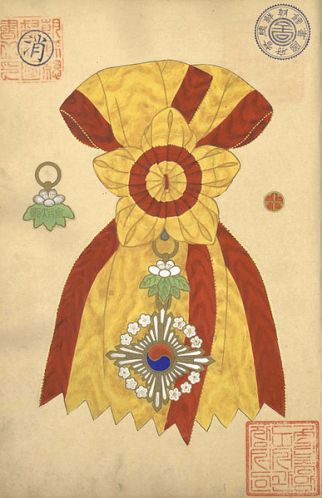
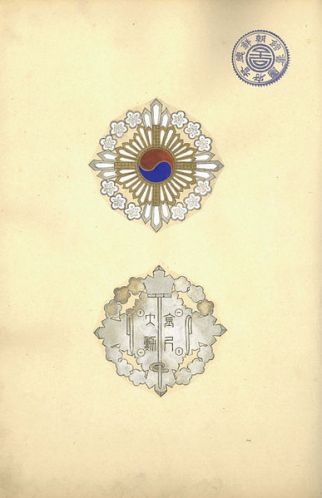

Grand Cordon of the Order of the Auspicious Stars 大勳位瑞星大綬正章 (대훈위 서성대수정장)
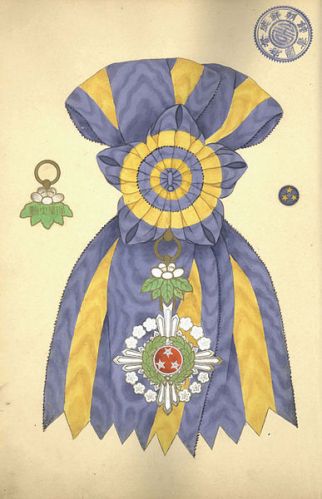
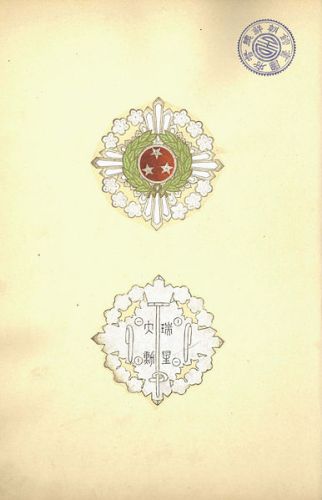
In Korean, the word for Auspicious 瑞 (서) is a homophone for an archaic expression for the number “three” used with certain classifiers.
The Grand Cordon of the Auspicious Stars was a single class order founded by Emperor Kwangmu on August 12, 1902. This order functioned as the second class of the Grand Order of the Golden Measure. It was awarded for “Outstanding Services” to the empire. To receive the order, it was necessary to be a holder of the Grand Cordon of the Plum Blossom. It equates to the Japanese Grand Cross of the Order of the Chrysanthemum.
There are two different reverse inscriptions for the Breast Stars. The one inscription is: 瑞星貮等 (서성이등) Auspicious Stars Second Class. The general belief is that it refers to being the second-highest Grand Cordon. I have found nothing to indicate that the Grand Cordon of the Auspicious Stars came in two classes. The other inscription is 瑞星大勳 (서성대훈) Auspicious Stars Grand Order. This second inscription is also found on all the suspension reverses.
Like all odd numbers, three is considered masculine and is an important number in Asian thought. From the basic trinity of Heaven, Earth and Man, there is a multitude of trinities that are derived. In mythology, the Three-Star Gods were Happiness, Affluence (Rank) and Longevity.
Grand Cordon of the Order of the Plum Blossoms 大勳位李花大綬正章 (대훈위이화대수정장)
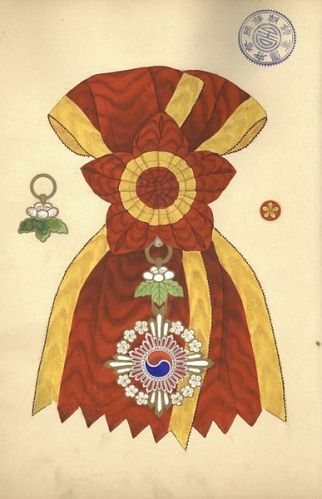
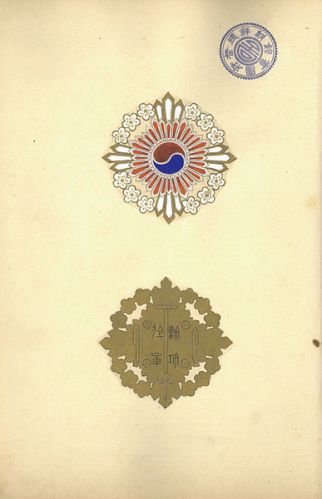
The Grand Cordon of the Plum Blossoms was a single class order founded by Emperor Kwangmu on April 17, 1900. This Order functioned as a superior class for the Order of Taeguk. It equates to the Grand Cross of the Order of the Rising Sun with Paulownia Flowers. The ribbon is 110 mm purple with white stripes 19 mm towards each edge.
There is some controversy concerning the sash used on the Grand Cordon of the Plum Blossom. For variations in ribbon colors, see below.
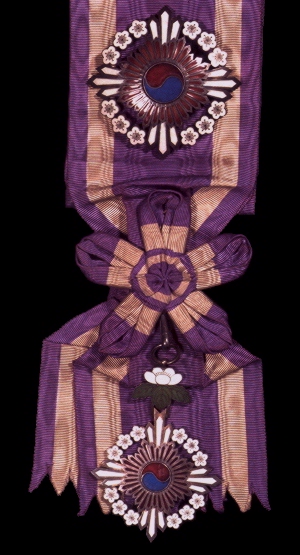

大勳位李花大綬正章
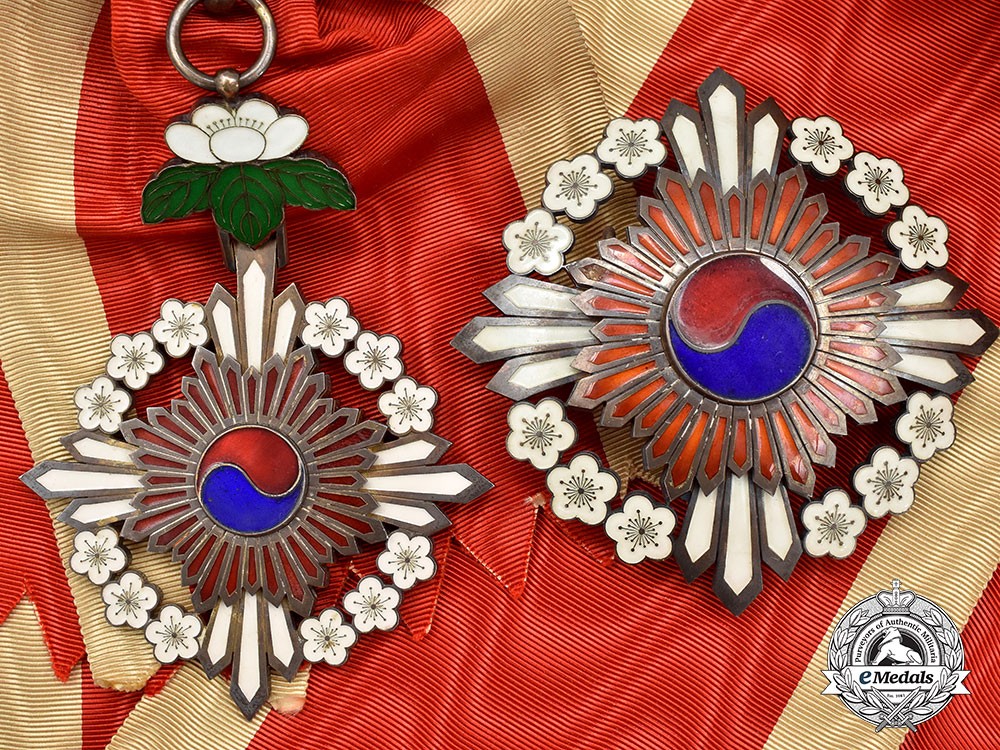
Order of Taeguk 太極正章 (태극정장)
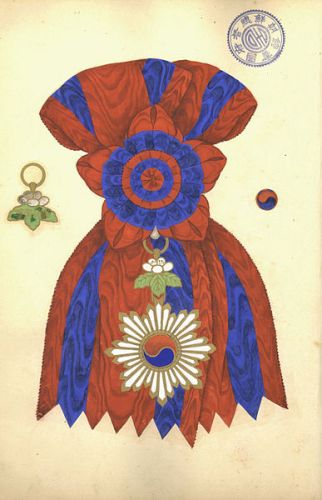
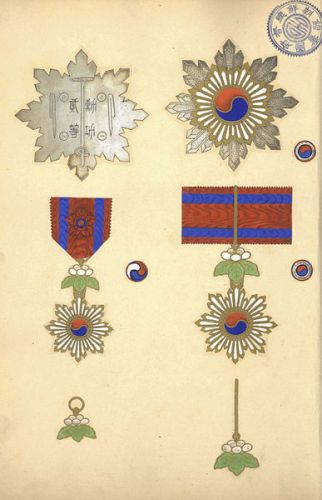
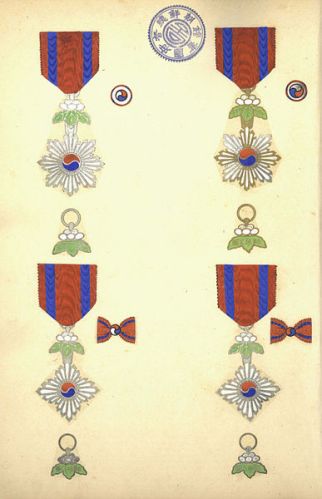
The Order of Taeguk was an eight class order founded by Emperor Kwangmu on April 17, 1900. It equates to the Japanese Order of the Rising Sun and served as an Order of Civil Merit. The ribbon for the 1st class is 107 mm red with 12 mm blue stripes towards each edge.
On a 1st Class set, if you turn over the breast star, you will find the character “貮” (이) meaning two. This is an obsolete financial character, and not commonly seen. All 1st Class sets have a 2nd Class Breast Star. The 2nd Class of this order uses the same breast star as the 1st Class, combined with a 3rd Class cravat and pendant. This is the normal way that they are found, and anything, apart from this, should be suspect. The 2nd Class breast stars can be found in their own individual cases, but they can also be found in a single case with a 3rd Class ribbon and pendant. The same holds true for the Order of the Eight Trigrams. There have been Orders of Taeguk, found in Japan, where the center has been replaced by a red cabochon, indicating a Japanese Rising Sun.

Order of the Eight Trigrams 八卦正章 (팔괘정장)
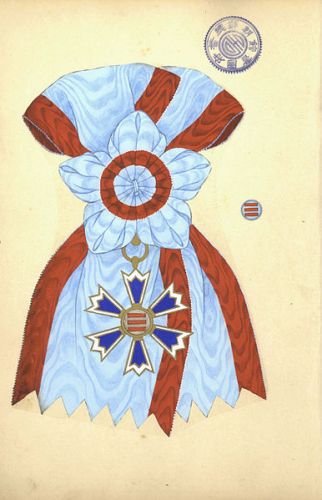
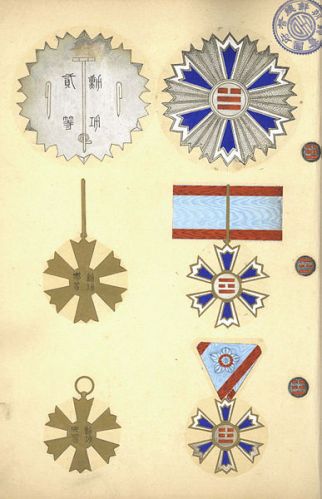
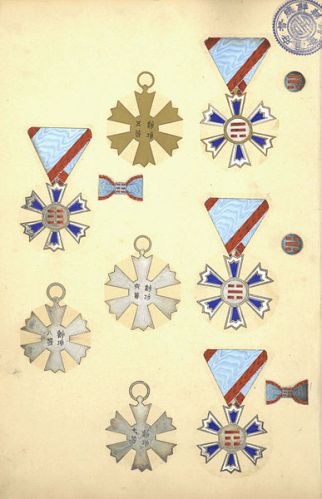
The Order of the Eight Trigrams was an eight class order founded by Emperor Kwangmu on April 16, 1901. The legal foundation for this Order had been established earlier on April 17, 1900. The Trigrams are derived from Taoist Divination Principles, with each of the eight classes representing particular objects and/or virtues.
Only the 1st Class pendant is enameled on both sides. The other classes have a plain reverse with a Chinese inscription. Peterson mentions that some medals are of Japanese manufacture. The Order of the Eight Trigrams equates to the Japanese Order of the Sacred Treasure and served as the junior civil order of merit. The ribbon for the 1st class is 107 mm pale gray-blue with 18 mm red stripes towards each edge. In Japan, various classes of this order have been observed, with the ribbon being replaced with the ribbon for the Japanese Order of the Rising Sun. There have also been Orders of the Eight Trigrams with the center being replaced by a red cabochon, also indicating a Rising Sun.
The 1st Class breast star has the 2nd Class Trigram pattern (one broken, female bar, above two solid male bars). If you turn over the breast star, you will find the character “貮” (이) meaning two. This is an obsolete financial character, and not commonly seen. All 1st Class sets have a 2nd Class Breast Star. There are no known breast stars with the 1st Class Trigram. The 2nd Class of this order uses the same 2nd Class breast star combined with a 3rd Class cravat and pendant. This is the normal way that they are found, and anything, apart from this, should be suspect. There are no pendants with a 2nd Class inscription or 2nd Class Trigram. The 2nd Class breast stars can be found in their own individual cases. These were issued to those individuals who had previously been awarded a 3rd Class. The 2nd Class can also be found in a single case with a 3rd Class ribbon and pendant. These were given to recipients who had not previously been awarded a 3rd Class. All of this holds true for the Order of Taeguk.

Order of the Purple Falcon 紫鷹正章 (자응정장)
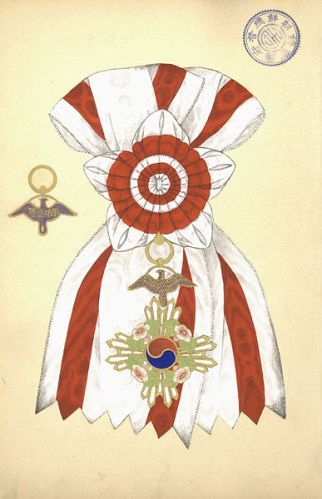
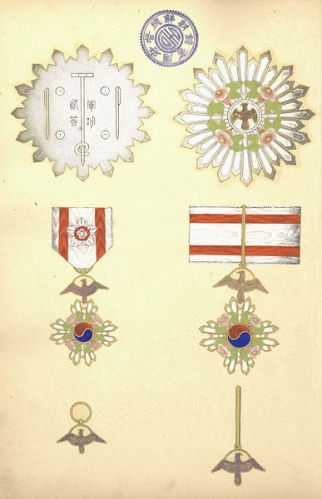
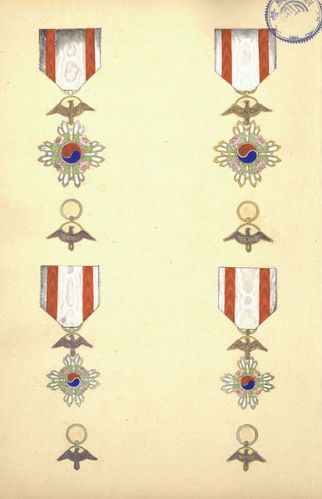
The Order of the Purple Falcon was an eight class order founded by Emperor Kwangmu on April 17, 1901, as a reward for distinguished military services. The Chinese Character 鷹 has several translations, including Falcon, Eagle, or Hawk. The name of the Order was purportedly taken from any of various old stories concerning Yi Song-gye 이성계 (李成桂 1335-1408), who established the Yi Dynasty in Korea (1392-1910). He is also known as Taejo 태조 (太祖). There was an admonitory address that he gave which used the term 鷹. In another story, he had a horse named Hoengwungol 횡운골 (橫雲鶻), the meaning of which was “A peregrine falcon crossing the clouds”. According to another source, the name ‘Ja-eung’ 자응 meaning ‘falcon’ and was taken from an old story that originated from martial arts used during Taejo’s military career. According to another source, “He was brave like a peregine falcon 횡운골 (橫雲鶻 a falcon crossing the clouds)”. He was known as an avid falconry. While I can’t pin down the actual reason for the order’s name, the one thing that is sure, is that somehow, it is tied to the founder of the Yi Dynasty, Yi Song-gye. The hawk was also featured on a stamp issued in 1903 and a Russian style hawk appeared on a series of coins issued between 1899 and 1902.
The ribbon for the 1st class was white with red stripes towards each edge. This order corresponds to the Japanese Order of the Kite, and even though the Russo-Japanese War (1904-05) was fought during this time frame, this Order was never conferred. The Korean Empire Medal Roll does not list any recipients, and there are no known authentic specimens. There are, however, many reproductions being displayed in museums, and according to some sources, reproductions are available to the collecting community.
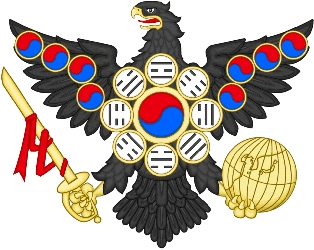
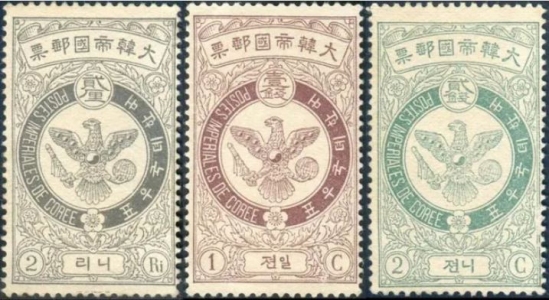
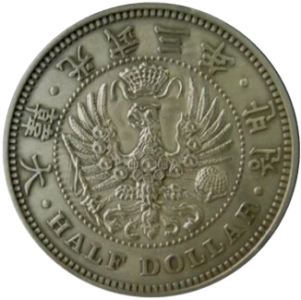
Order of the Auspicious Phoenix 瑞鳳正章 (서봉정장)
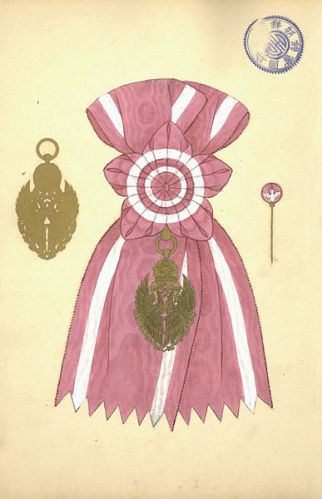
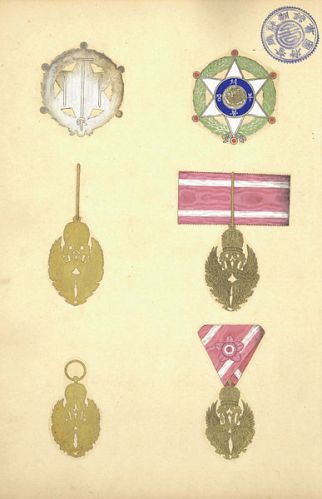
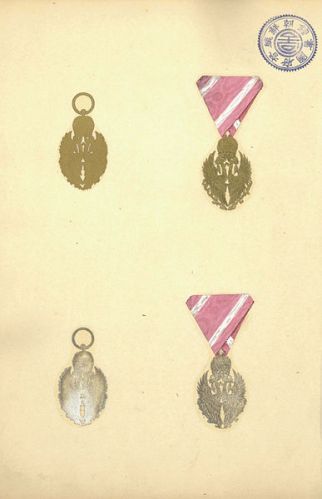
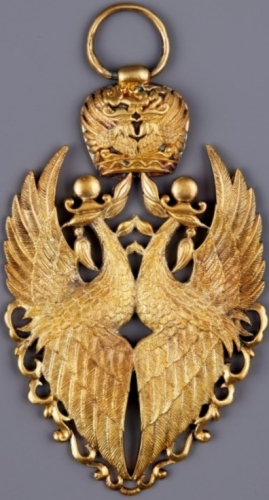
On March 30, 1907, the Emperor Kwangmu established the Order of the Auspicious Phoenix as a six-class order, limited to ladies only. It is equivalent to the Japanese Order of the Precious Crown. 서봉장 is a modern spelling for the order. The original spelling was 셔봉쟝. The text around the outside of the breast star is 셔봉부쟝. It was awarded by the Korean Empress. There are no known complete specimens, but a damaged breast star, a sash, and an empty fitted case do exist. Currently, there are reproductions of the pendant in the marketplace. Reproductions are easily detectable by their plain reverse. According to Korean records, there were 77 awards given. The 6th Class was never awarded. The ribbon for the 1st Class is 80 mm and is pink with 9 mm white stripes towards each edge.

순정효황후(純貞孝皇后) Photograph is purportedly dated to 1909.
The picture presented here has been colorized and clearly indicates a different color pattern on the sash than what is normally found on reproductions of this Order. However, colorizing black and white pictures is controversial. To get an idea of the problems, see Nick Komiya’s article on the subject.
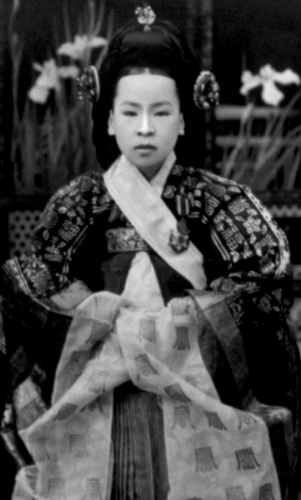
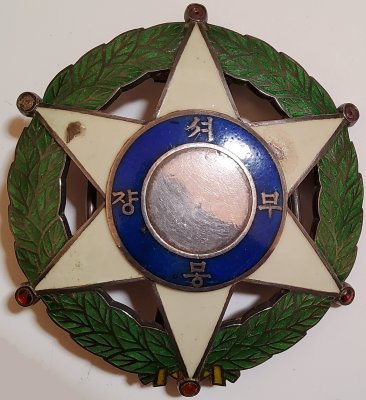
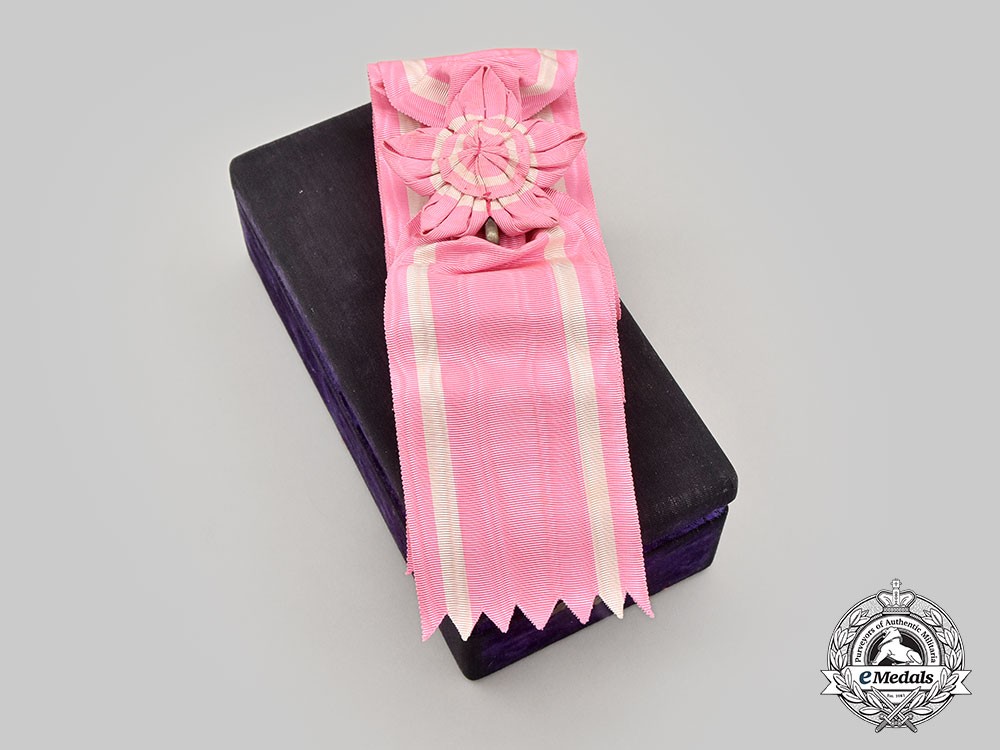
Footnotes:
- In Sejong Sillok Jiriji 세종실록지리지 (世宗實錄地理志 Geography Section of the Annals of King Sejong’s Reign), it states: “…it was called Puaak in the period of Silla Dynasty and was called Paekak”. Today, it is called Pukhansan (북한산, lit. ’North Han Mountain’ or ‘Mountain North of the Han River’). It is the mountain on the northern periphery of the city of Seoul. It has three major peaks, Baegundae, Insubong, and Mangyeongdae. The original name of these three peaks was Samgaksan, meaning “Three-Horned Mountain”.
- Under the current Constitution of the Republic of Korea, Article 80 states: The President shall award decorations and other honors under the conditions as prescribed by act. 제80조 대통령은 법률이 정하는 바에 의하여 훈장 기타의 영전을 수여한다. It uses the same Korean legal term 영전.
- Korean Empire Era, Decorations System 대한제국시대 훈장제도, P. 210
- If you go to the National Library of Korea, you will find a “schema:image” listing. Select any image in this listing, and you will be taken to a second page. This second page will give you a “.JPG” file that you can select to get the image. The images of the orders and medals, don’t start until the “schema;image” listing of “eadl…….img6”.
